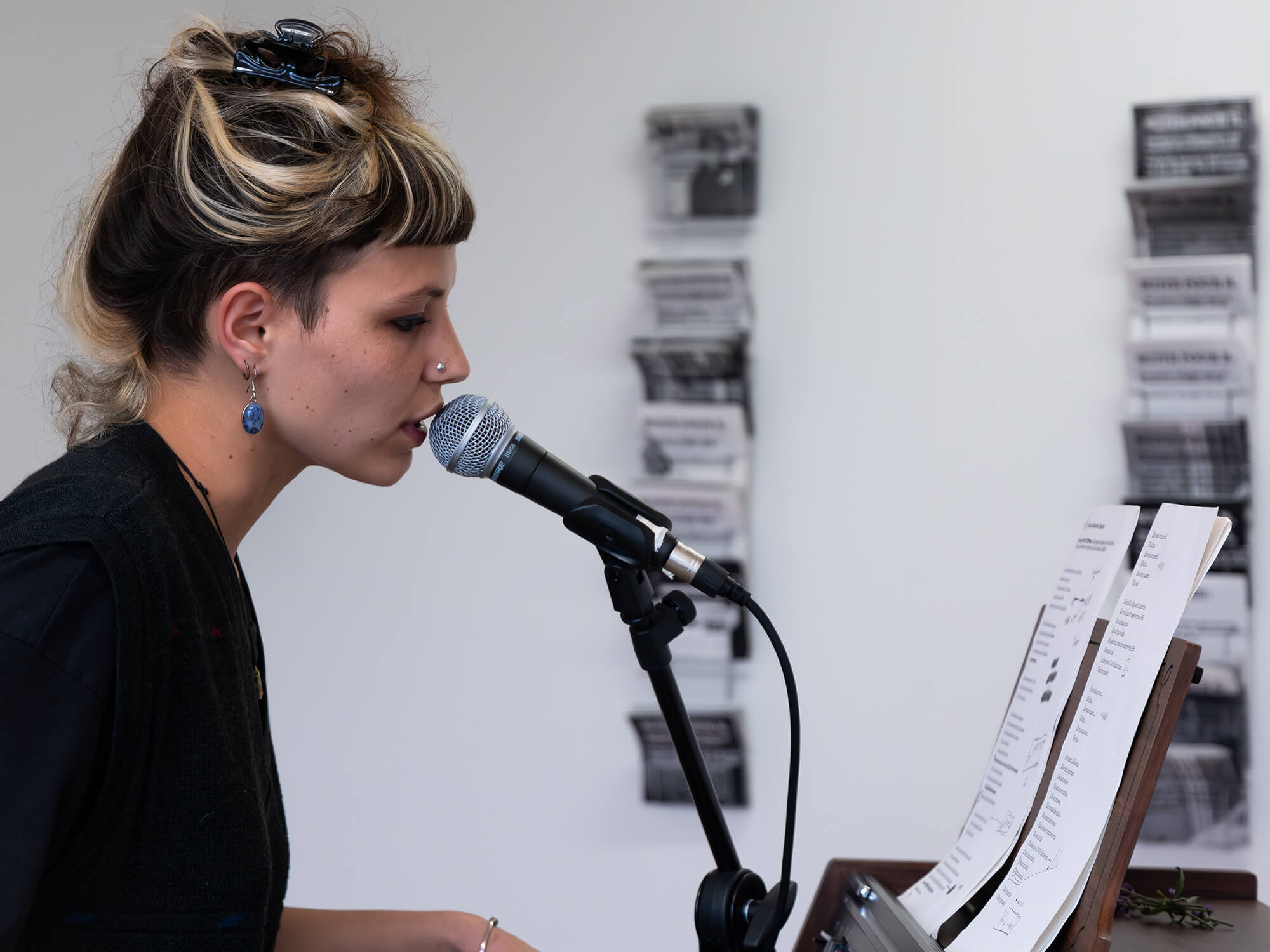
Hrodland
Installation: Video, photos and visual, sound and text archives. Various formats.
Hrodland is part of an investigation conducted since 2022 by artist Charlotte Centelighe into the origin of the first name of her drum machine: Roland(e). Initially purchased to make music, it quickly became a comrade in her creations(Suite pour R. [Roland], 2024, I nearly married a human, 2024, Roland(e) à la mer, 2023, Moi, je l'appelle Roland(e), 2023). The artist offers a delirious investigation into the myth of "La chanson de Roland" and the iconography suggested by this name. Her work takes us on a zany yet intimate quest to find out what she may have missed or, conversely, what seems so obvious.
As part of the second edition of the biennale son, she invites us into her work through a travelogue in the footsteps of Roland(s) and his monuments, on the border between the real and the absurd.
Charlotte Centelighe
Born in 2001
Based between Sion and Lausanne
Charlotte Centelighe is a young multidisciplinary artist, graduating from EDHEA in 2024 with a Bachelor's degree in Visual Arts and from CEPV in 2020 with a CFC in ceramics. In 2024, she was awarded a residency at the Musée d'art du Valais in Sion and the Brigitte Mavromichalis prize. The same year, she was invited as a resident artist at sea by the associations Pacifique and Makaline (Geneva).
Between 2023 and 2025, she presented her installations and sound readings "Moi, je l'appelle Roland(e)" and "Suite pour R. [Roland]" in several off-site venues. In 2025, she presented her first exhibition at the El Encuentro space in Sion. This work refers to her memoir "Tout brûler, ça te déplace", which she published (in small numbers) in autumn 2024. In parallel, Charlotte Centelighe has been a member of the TadamCie collective since 2021. She is also involved with the journal "La mondiale", in Lausanne, and took part in the management of the bigbang space in Sierre between 2022 and 2023.
In her work - which combines iconographic and historical archives, writing, sculpture and sound research - she deconstructs the stories of ordinary lives in order to grasp their structures. She is interested in the details of everyday life, which she parallels with historical or popular myths to understand how (human) lives are anchored in time and place. She describes her approach as "countertop anthropology".
Other artists
-Luc-Meier-01.webp)
Crys cole

Alvin Curran

Dafne Vicente-Sandoval & Charles Curtis
Other artists

Tom Johnson played by Pierre Berthet

Eric Hattan with Oliver Senn

